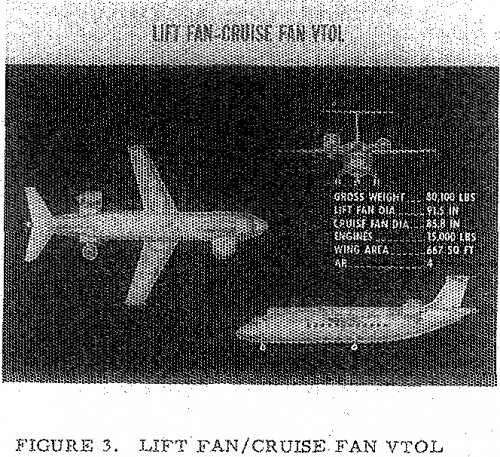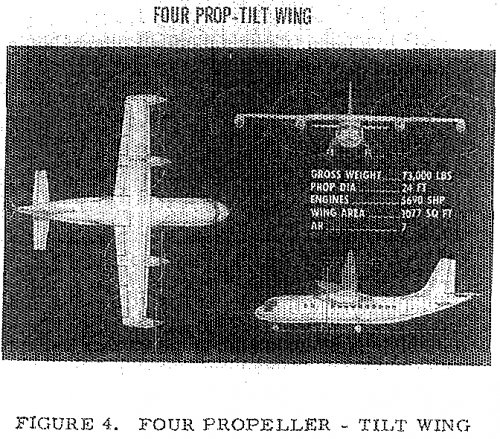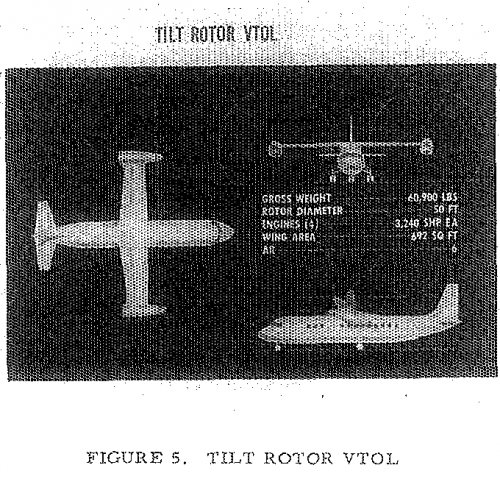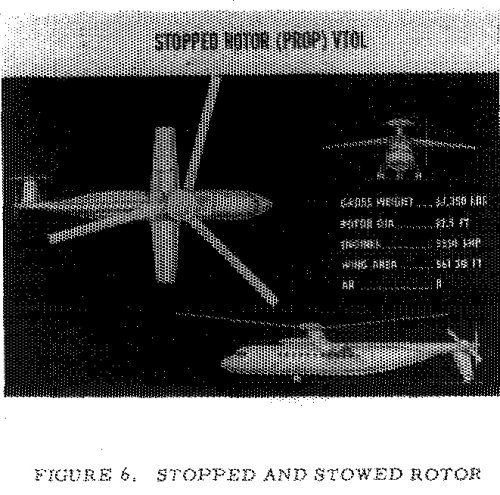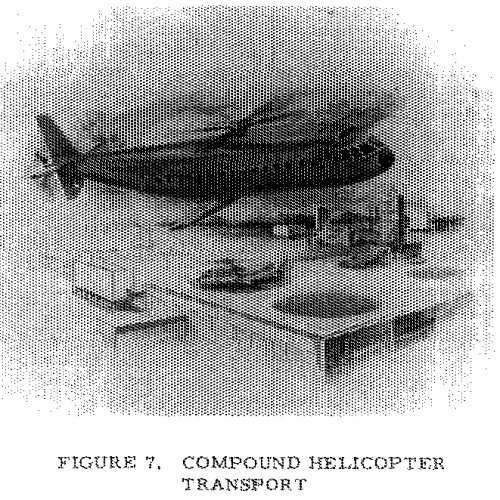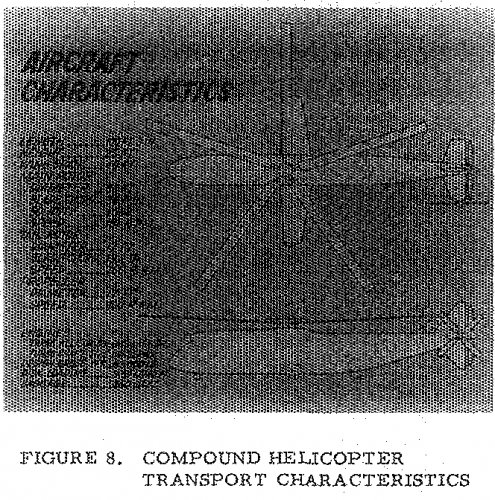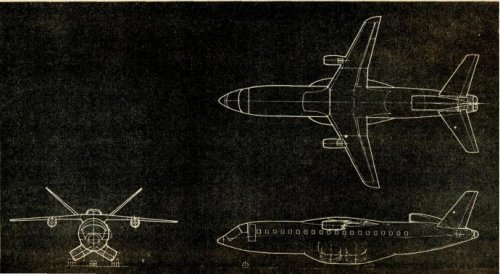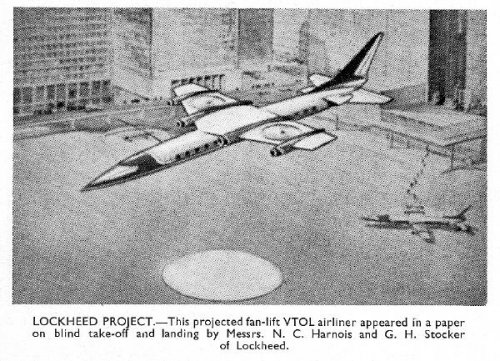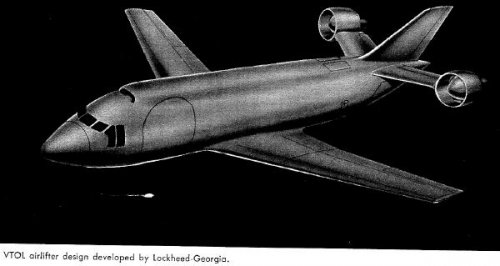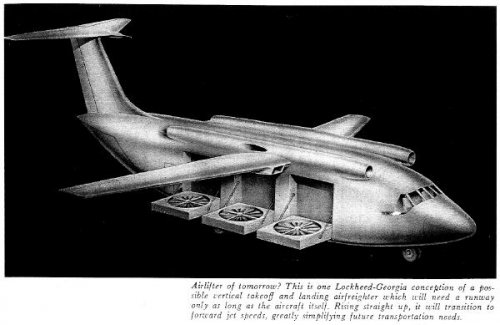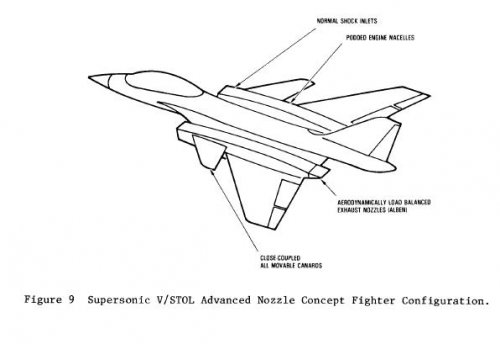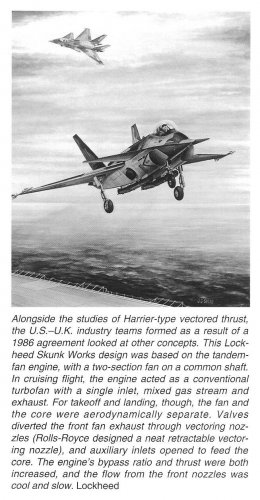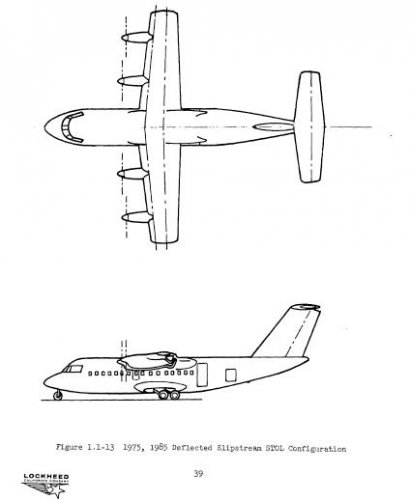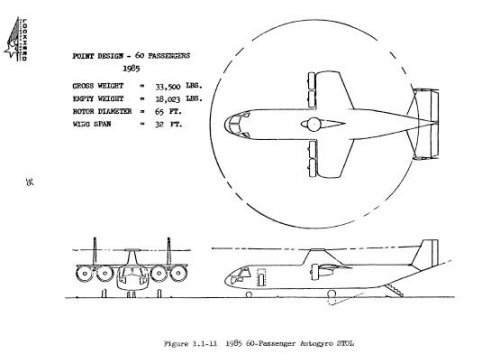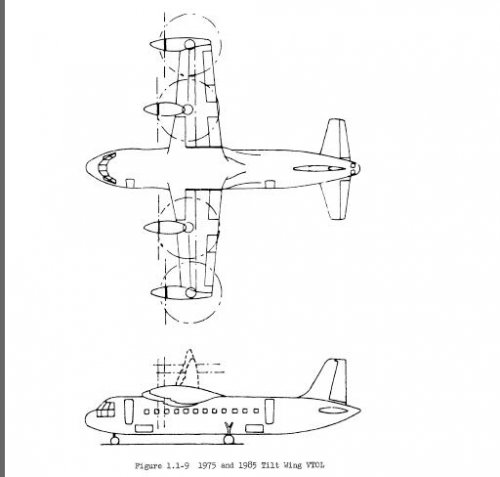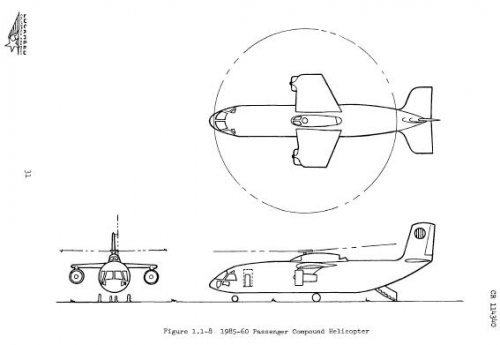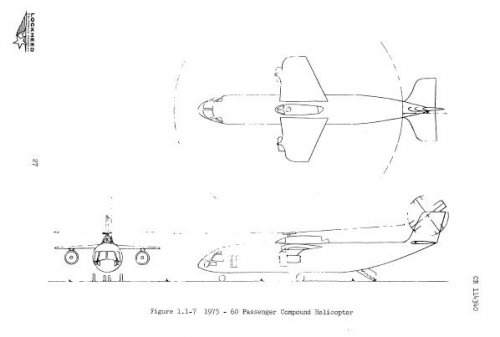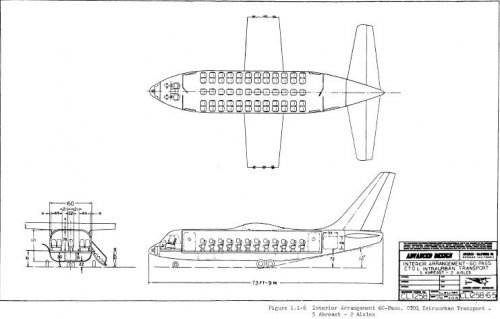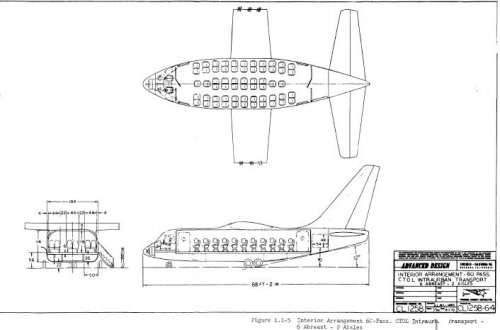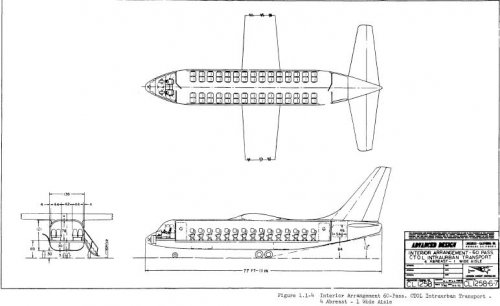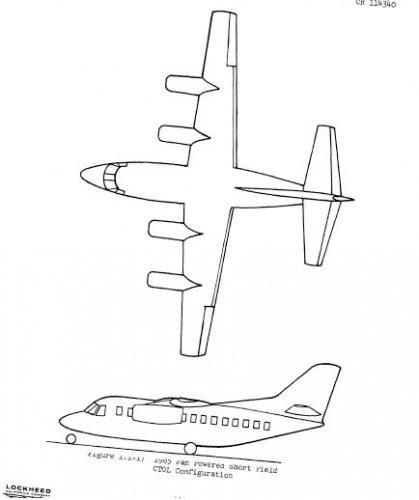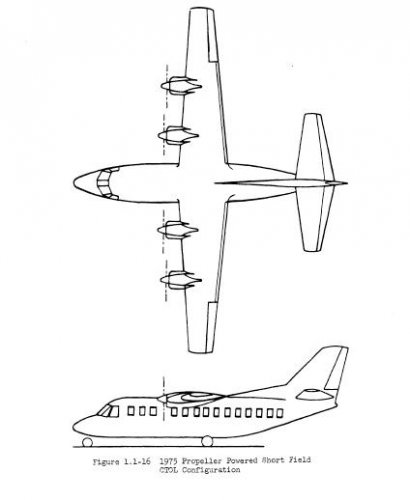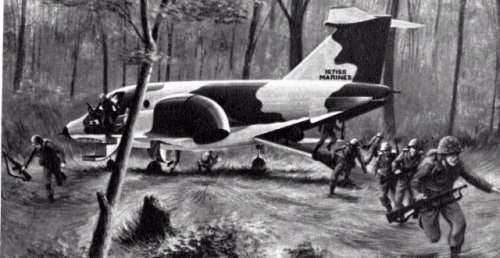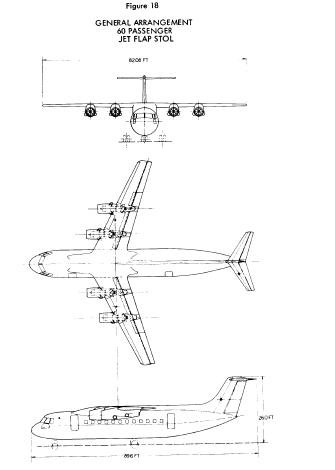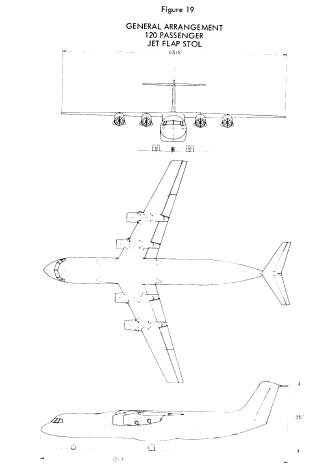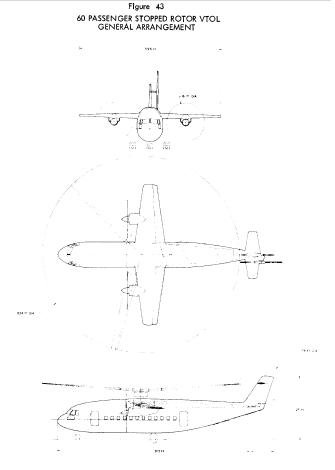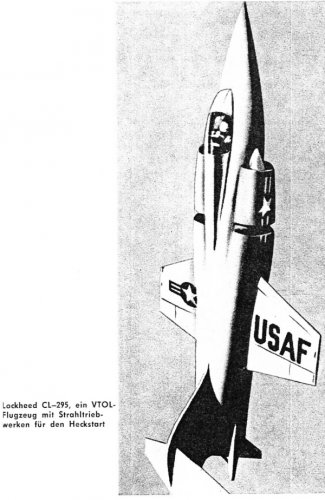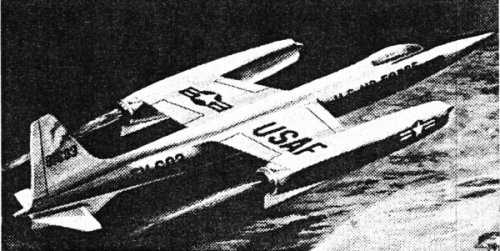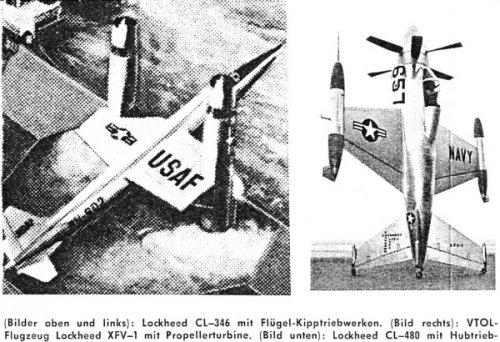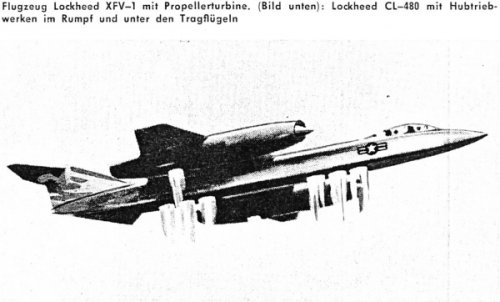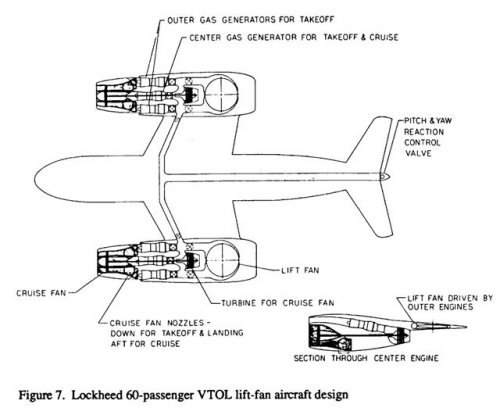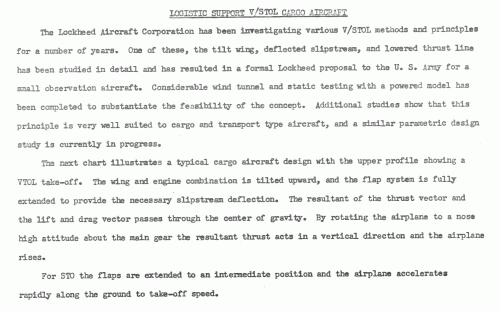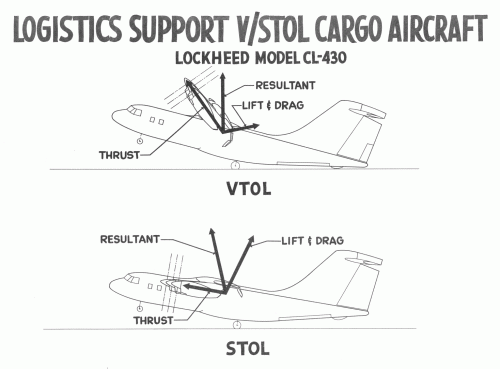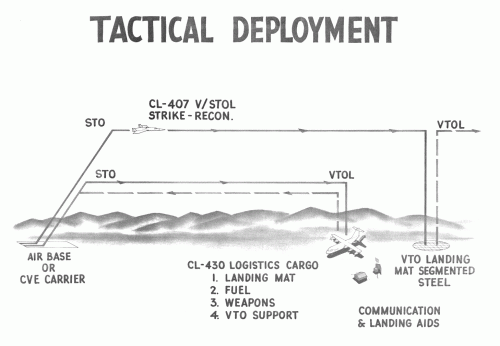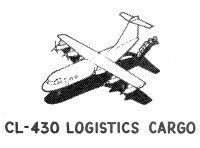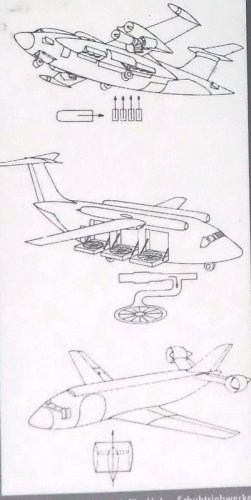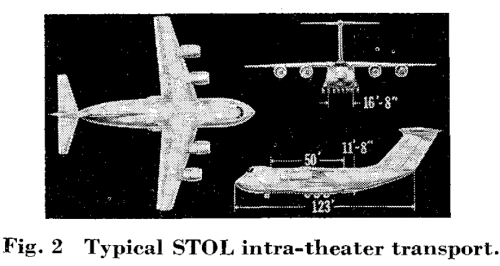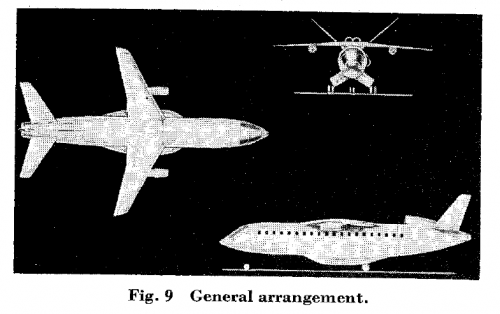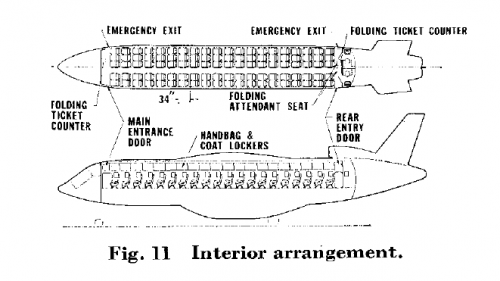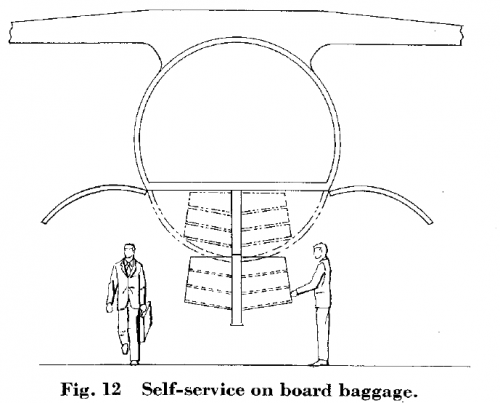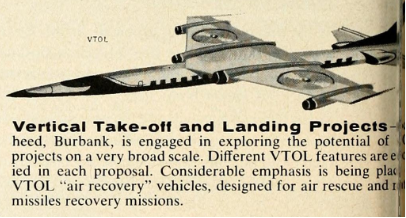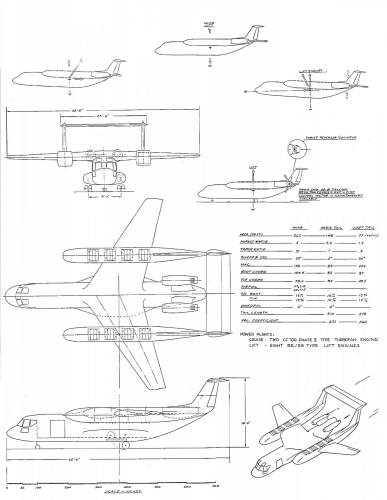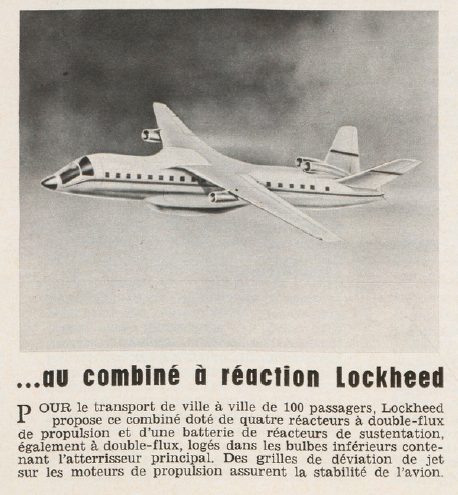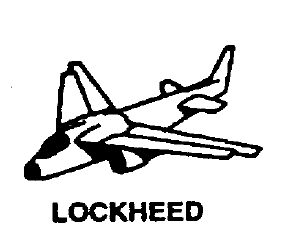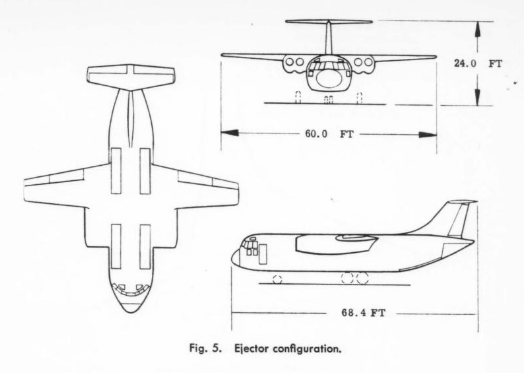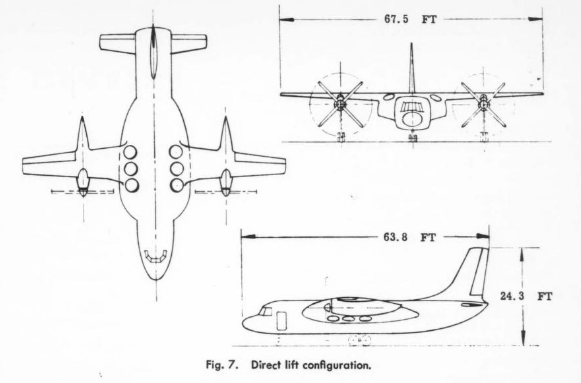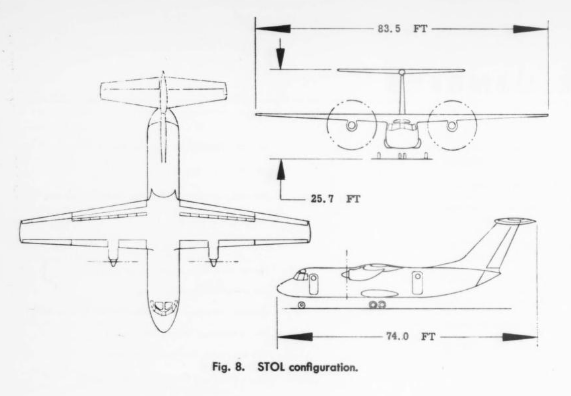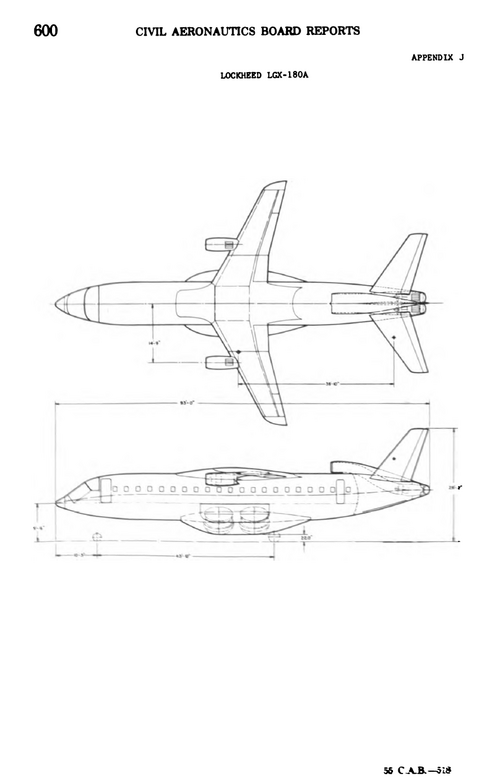You are using an out of date browser. It may not display this or other websites correctly.
You should upgrade or use an alternative browser.
You should upgrade or use an alternative browser.
Various Lockheed VTOL/VSTOL/STOL Projects
- Thread starter hesham
- Start date
vstol
ACCESS: Confidential
Tophe said:Thanks a lot ;D Matej: I had never seen this XV-2 previosly, and I have immediately updated my asymmetric-aircraft page with it (at the end of http://cmeunier.chez-alice.fr/Asymm_addition.htm ). Thanks again! ;D
There are a lot of asymmetric designs on this page: www.obliqueflyingwing.com and in the comprehensive history paper attached at http://www.obliqueflyingwing.com/OWhistory.pdf.
- Joined
- 1 April 2006
- Messages
- 11,394
- Reaction score
- 10,296
VTOL and STOL aircrafts studied by Lockheed Cailfornia in 1966 to create a 'thoroughly integrated transportation system' solving Boston-New York-Washington, DC complex transportation problem.
APPLICATIONS OF VTOL AND STOL AIRCRAFT
BOSTON TO WASHINGTON
by
W. N. STATLER
Lockheed-California Company
Burbank, California
AIAA Paper
No. 66-964
APPLICATIONS OF VTOL AND STOL AIRCRAFT
BOSTON TO WASHINGTON
by
W. N. STATLER
Lockheed-California Company
Burbank, California
AIAA Paper
No. 66-964
Attachments
- Joined
- 26 May 2006
- Messages
- 34,901
- Reaction score
- 15,761
Hi,
the Lockheed designed a nice V/STOL transport aircraft in 1969,
it was powered by four turbofan engines and can carry 100-passenger,
its estimated speed was Mach 0.8 and weight 76,000 1b.
http://www.flightglobal.com/PDFArchive/View/1969/1969%20-%203289.html
the Lockheed designed a nice V/STOL transport aircraft in 1969,
it was powered by four turbofan engines and can carry 100-passenger,
its estimated speed was Mach 0.8 and weight 76,000 1b.
http://www.flightglobal.com/PDFArchive/View/1969/1969%20-%203289.html
Attachments
- Joined
- 27 December 2005
- Messages
- 17,748
- Reaction score
- 26,420
LOCKHEED-GEORGIA is STUDYING a 100-passenger Mach 0.8 , V/STOL transport, turbofan powered and with a gross weight of 76,000lb. It would have a 500 n.m. range. The project uses four lift fans each of about 20.000lb thrust and four propulsion turbofans. two in wing pods and two in the tail. The former are used to provide low-speed roll control and the latter pitch control. The use of the propulsion engines for attitude control brings the optimum number of lift engines down to four, according to Mr T. Gardner Hill, senior research and development engineer. Lockheed-Georgia.
When lift engines are installed in pods some distance from the aircraft e.g. the unbalanced moment occurring after an engine failure could be of greater magnitude than a bleed-air roll-control system could handle; and the only recourse would be to shut down the corresponding engine on the other side. This in turn would require a considerable number of such engines, to make sure that the percentage loss of lift was suitably low. Lockheed studies indicated that the optimum number of wing podded engines would be eight. In the Lockheed design the lift fans are situated close to the e.g. and the unbalanced moments are small enough for the hover control system to trim out the forces and still meet the hover manoeuvre requirement without the need to shut down the corresponding powerplant. The engine location reduces the moments of inertia, reducing hover control requirements,which in turn reduces gross weight. According to Lockheed the lower weight and smaller number of engines would reduce cost considerably.
Three sources of power are available for control in the hover; bleed-air thrust, lift-engine thrust and cruise-engine thrust. The control moments vary directly with the aircraft moment of inertia, which itself varies roughly as the square of the gross weight. Lockheed suggest that for an aircraft with a gross weight above about 60,0001b there is insufficient thrust from bleed air to provide the desired amount of control. When lift engines are situated close to the e.g.. as in this project, the demands on a thrust-modulating system would be excessive, because of the short moment-arm. In the Lockheed project, therefore, the cruise engines areused for attitude control. By diverting their thrust, both up and down control effectiveness should be good. This system is not subject to the response-lag associated with thrust modulation of lift jets. In changing from horizontal to vertical flight, tailpipe clamshells close, while louvres in the top and bottom of the pod open to divert the thrust from horizontal to vertical. The louvres can then be moved to give differential exhaust areas between top and bottom, when upward and downward thrust is demanded for roll or pitch hover control. By deflecting these same louvres sideways on the two near fuselage-mounted engines, yaw control can be provided. The four turbofan cruise engines have a bypass ratio of about 2.5:1 and are probably in the 9,000lb-10,000lb-thrust class. The bypass ratio was chosen to give a good match between cruise and hover control requirements and helps to reduce turning losses in the thrust diverter. During hover the two cruise engines on the wing devote their entire thrust to providing redundant roll control while those in the tail provide redundant pitch and yaw control. A V tail has been chosen to avoid problems of exhaust impingement on tail surfaces: to retain a long moment-arm for pitch control thrust; and to allow side-by-side engine installation to minimise engine-out coupling between roll and pitch axes. The lift engines are installed in the same pods as the undercarriage and are canted at 30°,'their efflux being deflected to the vertical by a rotatable hoop of cascades. Rotation of these cascades towards the front or rear provides a horizontal thrust component for transitions. The cascade blades can be closed during cruising flight.
The canted engine installation was chosen to allow part of the engines to be tucked into the fuselage, with resulting reduction in pod size; to reduce pod/wing interference drag: to reduce pitch-up caused by the turning moment of the lift engine intake air during transition; and to confer the previously mentioned engine-out advantages. The position and thrust level of the propulsion engines should ensure freedom from re-ingestion into the lift fans. By substituting smaller lift engines the design would give an FAA STOL performance with a gross weight of 69.000lb The proposed aircraft would have five-abreast seating; forward and aft ticket counters; and a self-service retractable below fuselage baggage compartment to reduce turn-round time. Estimates indicate that this aircraft would be "cost competitive with any other generally known VTOL concept." But there is no indication of when the project could come to fruition.
Is there someone who haves a 3 view drawing of the
Lockheed GL 224-2 initial design to the
XV-4 Hummingbird.
In the X-Planes book-5 (Norton&Mathews) HPM Publications
the illustration about is very hazy...
Thanks in advance.
Lockheed GL 224-2 initial design to the
XV-4 Hummingbird.
In the X-Planes book-5 (Norton&Mathews) HPM Publications
the illustration about is very hazy...
Thanks in advance.
ysi_maniac
ACCESS: Confidential
- Joined
- 26 January 2007
- Messages
- 81
- Reaction score
- 33
- Joined
- 26 May 2006
- Messages
- 34,901
- Reaction score
- 15,761
Hi,
the Lockheed CL-1258 aircarft and helicopter
http://ntrs.nasa.gov/archive/nasa/casi.ntrs.nasa.gov/19720003335_1972003335.pdf
the Lockheed CL-1258 aircarft and helicopter
http://ntrs.nasa.gov/archive/nasa/casi.ntrs.nasa.gov/19720003335_1972003335.pdf
Attachments
- Joined
- 26 May 2006
- Messages
- 34,901
- Reaction score
- 15,761
Hi,
http://ntrs.nasa.gov/archive/nasa/casi.ntrs.nasa.gov/19670029003_1967029003.pdf
http://ntrs.nasa.gov/archive/nasa/casi.ntrs.nasa.gov/19670029003_1967029003.pdf
Attachments
-
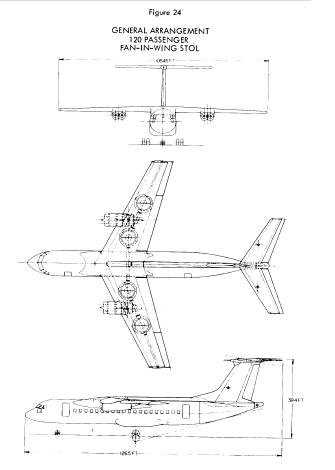 120-seat fan-in-wing STOL.JPG17.6 KB · Views: 251
120-seat fan-in-wing STOL.JPG17.6 KB · Views: 251 -
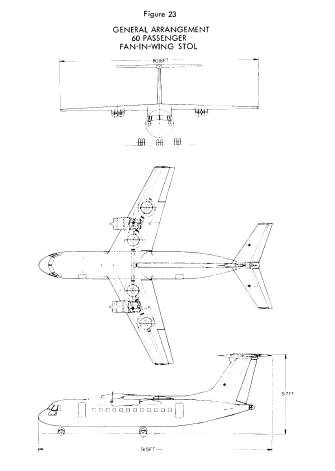 60-seat fan-in-wing STOL.JPG14.2 KB · Views: 217
60-seat fan-in-wing STOL.JPG14.2 KB · Views: 217 -
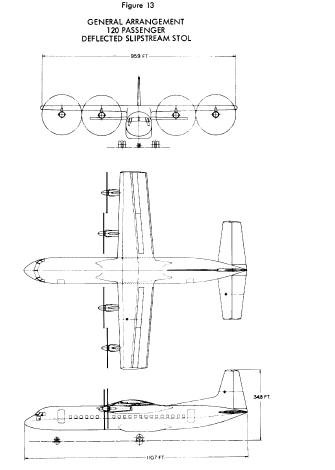 120-seat STOL.JPG16.8 KB · Views: 212
120-seat STOL.JPG16.8 KB · Views: 212 -
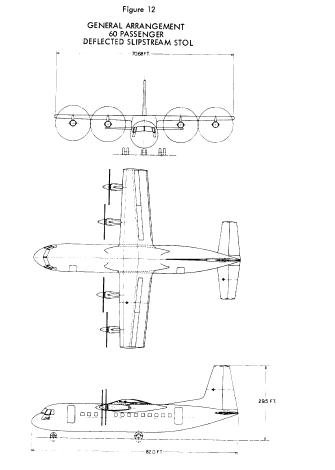 60-seat STOL.JPG15.7 KB · Views: 243
60-seat STOL.JPG15.7 KB · Views: 243 -
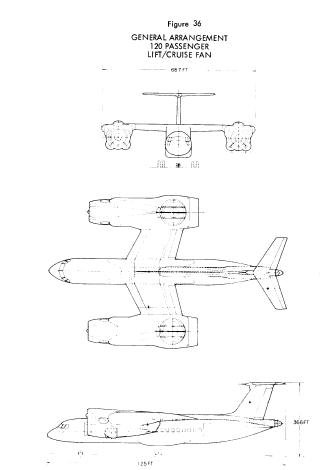 120-seat lift-cruise fan.JPG14.6 KB · Views: 271
120-seat lift-cruise fan.JPG14.6 KB · Views: 271 -
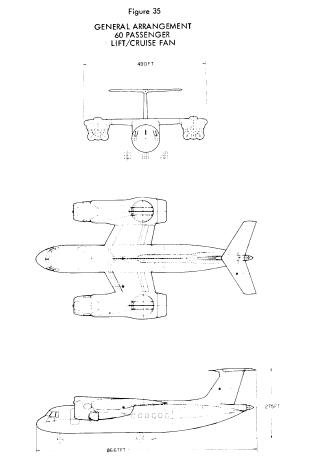 60-seat lift-cruise fan.JPG13.2 KB · Views: 253
60-seat lift-cruise fan.JPG13.2 KB · Views: 253 -
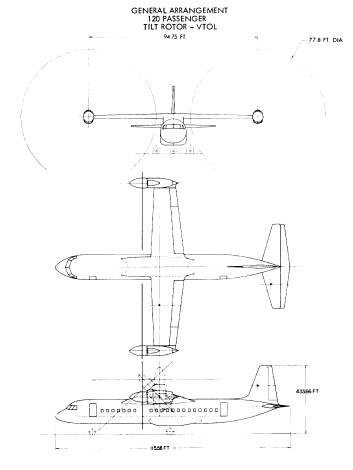 120-seat tilt-rotor VTOL.JPG14.7 KB · Views: 223
120-seat tilt-rotor VTOL.JPG14.7 KB · Views: 223 -
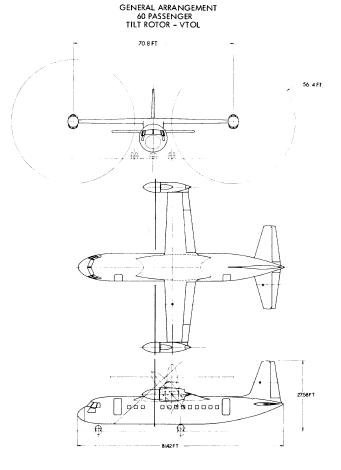 60-seat tilt-rotor VTOL.JPG15.2 KB · Views: 235
60-seat tilt-rotor VTOL.JPG15.2 KB · Views: 235
- Joined
- 26 May 2006
- Messages
- 34,901
- Reaction score
- 15,761
Hi Hesham, can you identify this project and direct me to a link with more information and pictures on it?hesham said:Hi,
Did we speak about that Lockheed VTOL project before ?
Thank you!
- Joined
- 11 March 2006
- Messages
- 8,625
- Reaction score
- 3,805
lark said:Any idea about the date of the German mag.?
Must have been between April 1962 to May 1963. This mag was
very short-lived.
Possibly 6 Jun 1962 page 10 if my note is correct.
Regards,
Barry
Regards,
Barry
- Joined
- 25 June 2009
- Messages
- 14,753
- Reaction score
- 6,147
A Lift-Fan Powered-Lift Aircraft Concepts from an old post by Gregory (flateric):
NASA Contractor Report 177616
The Lift-Fan Powered-Lift Aircraft Concept: Lessons Learned
Wallace H. Deckert
Retired NASA Ames Researcher
Oceanside, CA
Prepared for Ames Research Center
CONTRACT A25364D
September 1993
NASA Contractor Report 177616
The Lift-Fan Powered-Lift Aircraft Concept: Lessons Learned
Wallace H. Deckert
Retired NASA Ames Researcher
Oceanside, CA
Prepared for Ames Research Center
CONTRACT A25364D
September 1993
Attachments
- Joined
- 25 June 2009
- Messages
- 14,753
- Reaction score
- 6,147
This topic is for undesignated or poorly-documented VTOL, V/STOL and even STOL projects by Lockheed.
For more specific types, please post in any of the following:
Thanks a lot!
For more specific types, please post in any of the following:
- Lockheed CL-379 - A New VTOL-STOL [link]
- Lockheed CL-757 « Dragon Star » VTOL test rig [link]
- Lockheed LGX-191 STOL transport aircraft [link]
- Lockheed V/STOL (US Navy "Type A" proposal) [link]
- Lockheed S-3 variants, STOL and oblique wing [link]
- Lockheed ASTOVL, JAST, JSF projects [link]
- Lockheed M-5 Penetrator & Supersonic Stealth STOVL projects [link]
- Lockheed CL-945 stowed-rotor aircraft (CARR) [link]
- Lockheed F-104 VTOL + Ryan/Girard heliplane [link]
Thanks a lot!
- Joined
- 25 June 2009
- Messages
- 14,753
- Reaction score
- 6,147
All helicopter projects (including the compound "retractoplane" CARR types) belong to the Various Lockheed helicopter projects topic.
- Joined
- 25 June 2009
- Messages
- 14,753
- Reaction score
- 6,147
Paul MM's acquisition of the original company brochure for the CL-407 V/STOL jet fighter project led to a pleasant discovery: a V/STOL logistics cargo transport project designated the CL-430.
Attachments
- Joined
- 11 March 2006
- Messages
- 8,625
- Reaction score
- 3,805
- Joined
- 26 May 2006
- Messages
- 34,901
- Reaction score
- 15,761
hesham said:the Lockheed designed a nice V/STOL transport aircraft in 1969,
it was powered by four turbofan engines and can carry 100-passenger,
its estimated speed was Mach 0.8 and weight 76,000 1b.
http://www.flightglobal.com/PDFArchive/View/1969/1969%20-%203289.html
And from AIAA;
http://arc.aiaa.org/doi/abs/10.2514/3.44264?journalCode=ja
Attachments
blackkite
Don't laugh, don't cry, don't even curse, but.....
- Joined
- 31 May 2007
- Messages
- 8,819
- Reaction score
- 7,716
Hi!
http://alternathistory.com/seans-aviatsionnoi-arkheologii-v-ofise-lockheed-martin
"Study on Lockheed vertical and short take-off and landing transports for the United States Marine Corps in the early 1960 's. design shown here CL-484-5-4 contained two to BY-PASS TURBOJET ENGINE cruise flight and eight engines for vertical takeoff."
http://alternathistory.com/seans-aviatsionnoi-arkheologii-v-ofise-lockheed-martin
"Study on Lockheed vertical and short take-off and landing transports for the United States Marine Corps in the early 1960 's. design shown here CL-484-5-4 contained two to BY-PASS TURBOJET ENGINE cruise flight and eight engines for vertical takeoff."
Attachments
- Joined
- 9 October 2009
- Messages
- 21,973
- Reaction score
- 13,630
From the Bernard Lindenbaum Vertical Flight Research Collection:
CL-346..........dispersed site VTOL fighter-bomber
- Joined
- 26 May 2006
- Messages
- 34,901
- Reaction score
- 15,761
Hi,
 ntrs.nasa.gov
ntrs.nasa.gov
Technology needs for high-speed rotorcraft, volume 1 - NASA Technical Reports Server (NTRS)
High-speed rotorcraft concepts and the technology needed to extend rotorcraft cruise speeds up to 450 knots (while retaining the helicopter attributes of low downwash velocities) were identified. Task I identified 20 concepts with high-speed potential. These concepts were qualitatively evaluated...
Attachments
D
Deleted member 2278
Guest
An article on Lockheed VSTOL projects. Starts Page 22, continues Page 62:
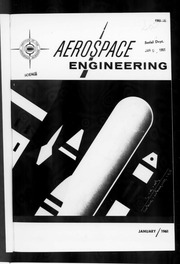
Aerospace Engineering 1961-01: Vol 20 Iss 1 : Free Download, Borrow, and Streaming : Internet Archive
Aerospace Engineering 1961-01: Volume 20, Issue 1.Digitized from IA1533707-03.Previous issue: sim_aerospace-engineering-1942_1961_20_index.Next issue:...
archive.org
- Joined
- 26 May 2006
- Messages
- 34,901
- Reaction score
- 15,761
An article on Lockheed VSTOL projects. Starts Page 22, continues Page 62:

Aerospace Engineering 1961-01: Vol 20 Iss 1 : Free Download, Borrow, and Streaming : Internet Archive
Aerospace Engineering 1961-01: Volume 20, Issue 1.Digitized from IA1533707-03.Previous issue: sim_aerospace-engineering-1942_1961_20_index.Next issue:...archive.org
From the same source.
Attachments
- Joined
- 26 May 2006
- Messages
- 34,901
- Reaction score
- 15,761
Hi,
the Lockheed designed a nice V/STOL transport aircraft in 1969,
it was powered by four turbofan engines and can carry 100-passenger,
its estimated speed was Mach 0.8 and weight 76,000 1b.
http://www.flightglobal.com/PDFArchive/View/1969/1969%20-%203289.html
From, Civil_Aeronautics_Board_Reports 1970,
a surprise,it was called LGX-180A.
Attachments
If it flew like DC-10s then it probably took off like a rocketship. I loved flying in the DC-10s for those aggressive launches. Quite fun compared to other aircraft of its time.
On another note, modern heavy airlifters utilized wheelhouses that act as wing in ground effect stub wings. Great for lift at ground level although they add extra drag in the air.
On another note, modern heavy airlifters utilized wheelhouses that act as wing in ground effect stub wings. Great for lift at ground level although they add extra drag in the air.
Last edited:
From, Civil_Aeronautics_Board_Reports 1970,
Here it is:
Civil Aeronautics Board Reports
books.google.com
Last edited:
Similar threads
-
Bell ,Vertol & Lockheed Wing Extension VTOL Old Projects ?
- Started by hesham
- Replies: 3
-
-
-
Lockheed Navy "Type A" VSTOL proposals
- Started by overscan (PaulMM)
- Replies: 13
-
Various Vought VTOL/VSTOL/STOL projects
- Started by elider
- Replies: 71


